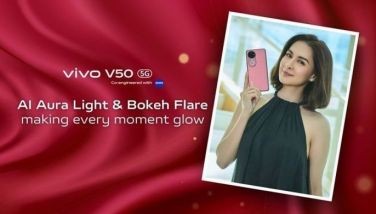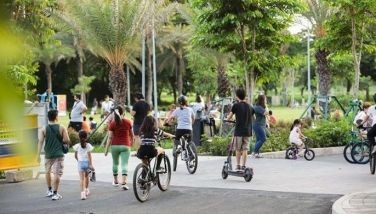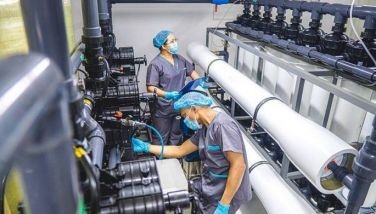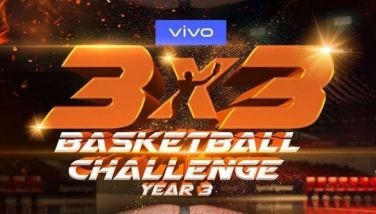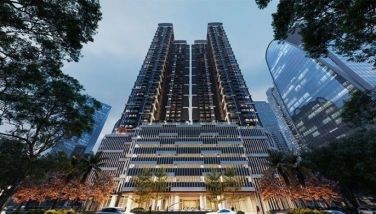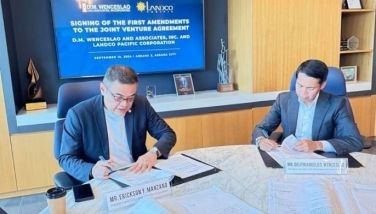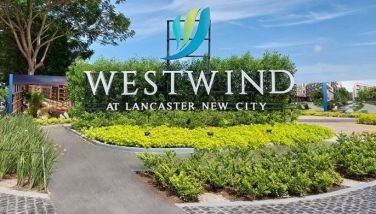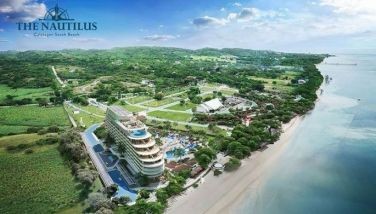BTTC Centre: Out-of-the-box design leads to LEED Gold
MANILA, Philippines - There is one noticeable structure along Ortigas Ave. in Greenhills, San Juan City that can be described as an icon.
The 12-story BTTC Centre has been turning heads and attracting pedestrians to the commercial complex. It has already been tagged as a landmark location since its completion two years ago.
BTTC is no ordinary building, according to its lead designer, architect Daniel Go. It boasts of huge multi-level office floor spaces and a penthouse that can be used as an events place.
Last June 10, BTTC Centre was conferred a Leadership in Energy and Environmental Design (LEED) Gold award for building design and construction by the United States Green Building Council.
San Juan Mayor Guia Gomez said it was an honor that the city was also recognized with the prestigious accolade, adding she hopes more buildings will follow the lead of BTTC and strive to make environmentally responsible structures.
A LEED is a certification program that recognizes best-in-class building strategies and practices. There are four other LEED categories: Interior Design and Construction; Building Operations and Maintenance; Neighborhood Development; and Homes.
Go said the challenge to designing the building was not only in the materials that had to be used but how his team of architects in ADGO Architecture and Design Inc. would maximize their artistic passion.
“That is why when we were designing this building, we make it a point to always think out of the box. This building must have a character and forms. It must be composed of geometric figures coming together to form a singular design of the unit that gives the impression of mobility, action, creativity, and dynamism. It must envision a sense that it was a well thought out design instead of just being a box,†he said.
Go added that the four sides of the BTTC Centre building consist of different shapes and designs. He said the majority of the floors are rectangular but has a combination of geometric shapes and curved lines for the exterior. “If I really wanted to be economical, I would just put up a box. Very simple design, just a box with a double-glazed glass and walls that are just insulated and then that’s it, right? But where’s the art there? Where’s the creativity? Where’s the passion for architectural excellence?†he noted.
The unique features of a LEED building are completely different from regular buildings and “green†buildings. One of the many criteria includes using insulated glass unit (IGU) or double-glazed glasses. “Normally, because of economics, we only use a single pane of glass on the windows of our buildings here in the Philippines. However, IGUs act like a thermos which regulates and maintains the temperature inside the building. When you run your air conditioning, it requires less electricity consumption because it cools faster,†he said.
Another important feature of a LEED building is the water systems and sewage treatment which are also designed and built differently. “The sanitary and water systems are being recycled. Rainwater and wastewater are gathered and processed repeatedly. In terms of sustainability, it’s being responsible to the environment. The waste generated is lessened,†he said.
Go also pointed out the use of an exterior insulated façade system or EIFS. “In the same principle where we try to regulate the temperature of the building inside, the EIFS also acts so that the walls do not absorb the radiant heat of the sun. This foam, EIFS, will act as insulation for heat that will be absorbed into the building. You were able to insulate the glass but if you were not able to insulate the other portions of the building, it’s the same thing. It has to be glass and the wall itself. You have to insulate both,†he said.
Other important innovations for a LEED building include using a power regenerating electrical system for elevators and a VRF system for air conditioning. “In the event that an elevator is not using full capacity, some of the energy generated will be converted and put back into the building’s electrical system. As for the AC, the VRF system uses less electricity to run the compressor,†he said.
He added that it is also good to highlight that 90 percent of all the floors were installed with light-emitting diode (LED) lights. Go said sustainability and low maintenance costs are among the advantages of a LEED building and it is more cost-effective in the long run.
- Latest











